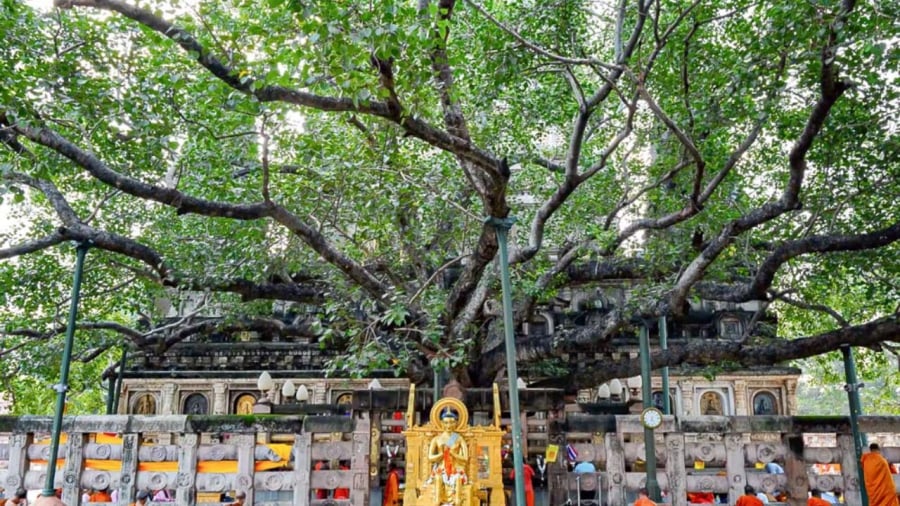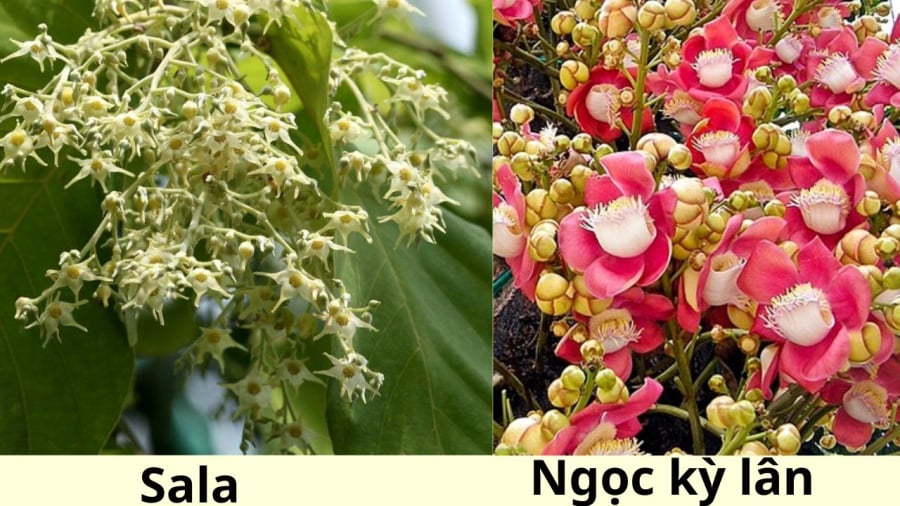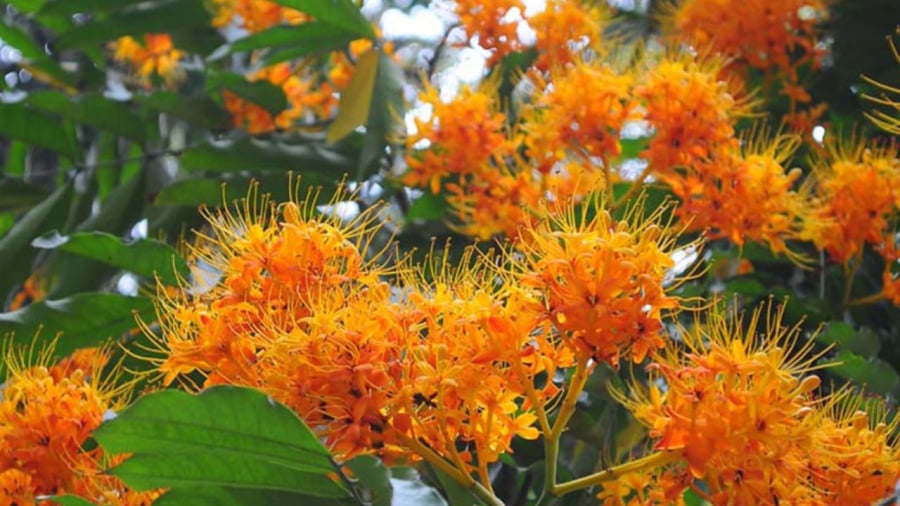In the historical flow of Buddhism, the image of the Buddha is not only present through his compassionate and wise teachings but also intimately linked to sacred natural symbols. Among them, three ancient trees stand out: the Ashoka, Bodhi, and Sala trees. Each holds a special significance as they witnessed the most important milestones in the life of Gautama Buddha — from his birth, enlightenment to his ultimate passing into Nirvana. Let’s explore the profound meaning of these three sacred trees and why they have become spiritual icons in the hearts of Buddhists worldwide.
1. The Ashoka Tree (Saraca asoca) – Witness to the Buddha’s Birth
Native to India, the Ashoka tree is now commonly found in Vietnam, especially in Hanoi, where it is known as Vàng anh. According to legend, Queen Māyā, on her way to her parent’s home to give birth to her first child, as was the custom, stopped in the Lumbini Garden and rested under an Ashoka tree. It is here that she gave birth to Siddhartha Gautama, the future founder of Buddhism. The newborn prince immediately stood up, took seven steps in each direction, and lotus flowers bloomed with each step.
The Ashoka tree is an evergreen with a large canopy, bearing bright yellow flowers with long stamens. Blooming in spring, the flowers emit a gentle fragrance. The name ‘Ashoka’ translates to ‘without sorrow’ or ‘without worry’, symbolizing a life of peace and freedom from anguish. In Buddhism, the Ashoka tree represents not only the birth of an enlightened being but also the liberation from suffering.
Ashoka trees are widespread and can be found in many temples and parks. Hanoi, in particular, boasts a significant number of Ashoka trees around Hoan Kiem Lake.
2. The Bodhi Tree – Where the Buddha Attained Supreme Enlightenment
The Bodhi tree (Ficus religiosa) holds immense spiritual significance in Buddhism. It was under this very tree in Bodh Gaya, India, that Siddhartha Gautama meditated for 49 days and nights, ultimately attaining Buddhahood in 588 BCE.
Bodhi trees have a massive trunk, heart-shaped leaves, and a robust life force. They symbolize wisdom, enlightenment, and steadfastness. It was beneath this tree that the Buddha achieved enlightenment, thus beginning his mission to spread the Dharma and guide all beings towards liberation.

Today, many Buddhist temples feature Bodhi trees as a symbol of enlightenment and wisdom. Given their association with temples and their massive size, Bodhi trees are not typically planted in front of homes. However, families may choose to grow Bodhi bonsai trees or display Bodhi leaves and artwork in their homes.
The presence of a Bodhi tree can induce a sense of calm and tranquility, helping individuals cultivate a more serene and focused mindset.
3. The Sala Tree – Witness to the Buddha’s Passing into Nirvana, Often Misidentified
The Sala tree (Shorea robusta), also known as the Sal tree, holds a significant place in Buddhist scripture. It is said that the Buddha entered Nirvana during the season of blooming Sala flowers. At the age of 80, the Buddha lay down between two Sala trees and peacefully passed away, having completed his mission of propagating the Dharma.
Sala flowers are white, highly fragrant, and possess a dignified beauty. They symbolize completion and liberation from the cycle of birth and death. In Buddhist culture, the Sala tree represents a ‘return’ to one’s true nature, to the state of Nirvana, free from the shackles of existence.

Today, Sala trees are commonly planted at Buddhist memorial sites, and the image of twin Sala trees is often depicted in artwork portraying the Buddha’s passing, reflecting a deep reverence for his legacy.
However, it is important to note that the Sala tree mentioned in Buddhist scriptures (Shorea robusta) is often misidentified. The tree with red-flowered ‘lizard-like’ petals, known as the Ngoc Ky Lan tree, is native to Sri Lanka and has been mistakenly referred to as ‘Sala’ since colonial times. The true Sala tree of the Buddha, with its white flowers, is native to the Indian subcontinent’s primary forests.
While Ashoka and Bodhi trees can be cultivated in various settings, including homes and gardens, the authentic Sala tree of the Buddha is not commonly grown in residential areas.
The Ashoka, Bodhi, and Sala trees, witnesses to the Buddha’s birth, enlightenment, and passing, have become immortal symbols in the hearts of millions of Buddhists worldwide. Beyond their association with pivotal events in the Buddha’s life, these trees convey profound messages about life, enlightenment, and liberation. Paying homage to, planting, or caring for these trees is not just an act of reverence but also a reminder to live a life of compassion, wisdom, and inner peace.
For reference and contemplation only










